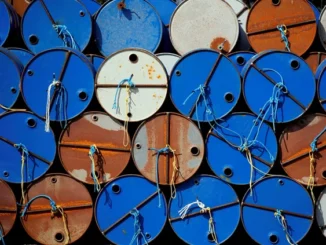
OPEC+ pumped more than 2.5 million barrels per day (bpd) below its target in June, despite a rebound in Russia’s oil production that helped the group’s output rise by 730,000 bpd from May, according to the Argus survey published on Friday.
Saudi Arabia and Iraq, OPEC’s largest and second-largest producers, raised their output as domestic demand from power plants that burn oil increased seasonally. Russia, the largest non-OPEC producer part of the OPEC+ pact, saw its production rebound last month and rise by 550,000 bpd compared to May.
Russia’s oil production rose in June and was approaching the levels last seen in February, just before the Russian invasion of Ukraine. Most of the rebound was due to higher intake from domestic refiners.
Elsewhere in the OPEC+ group, non-OPEC Kazakhstan and Azerbaijan saw production declines in June due to maintenance at key oilfields, the Argus survey showed.
Kazakhstan’s crude oil supply to the global markets has just become more uncertain in the coming weeks after a Russian court this week ordered the Caspian Pipeline Consortium (CPC), which operates a key export route for crude oil from the huge oilfield Tengiz, to suspend activities for 30 days, citing environmental violations.
OPEC’s Nigeria continued to experience severe production problems. Its output slumped to a 17-month low in June as shipments of the Forcados and Qua Iboe crudes fell, per the Argus survey.
Nigeria was also the main driver of lower production at all 13 OPEC members in June, the monthly Reuters survey showed last week. OPEC’s crude oil production fell in June compared to May due to outages in Libya and Nigeria, and the 10 cartel producers bound by the OPEC+ pact lifted their combined production by just 20,000 bpd last month, according to the survey.
Last week, OPEC+ confirmed a 648,000 bpd production hike for August, with which it will have effectively rolled back all the cuts it started in May 2020 in response to the crash in demand. The group, however, continues to significantly undershoot its targets.
Source: Oilprice.com



